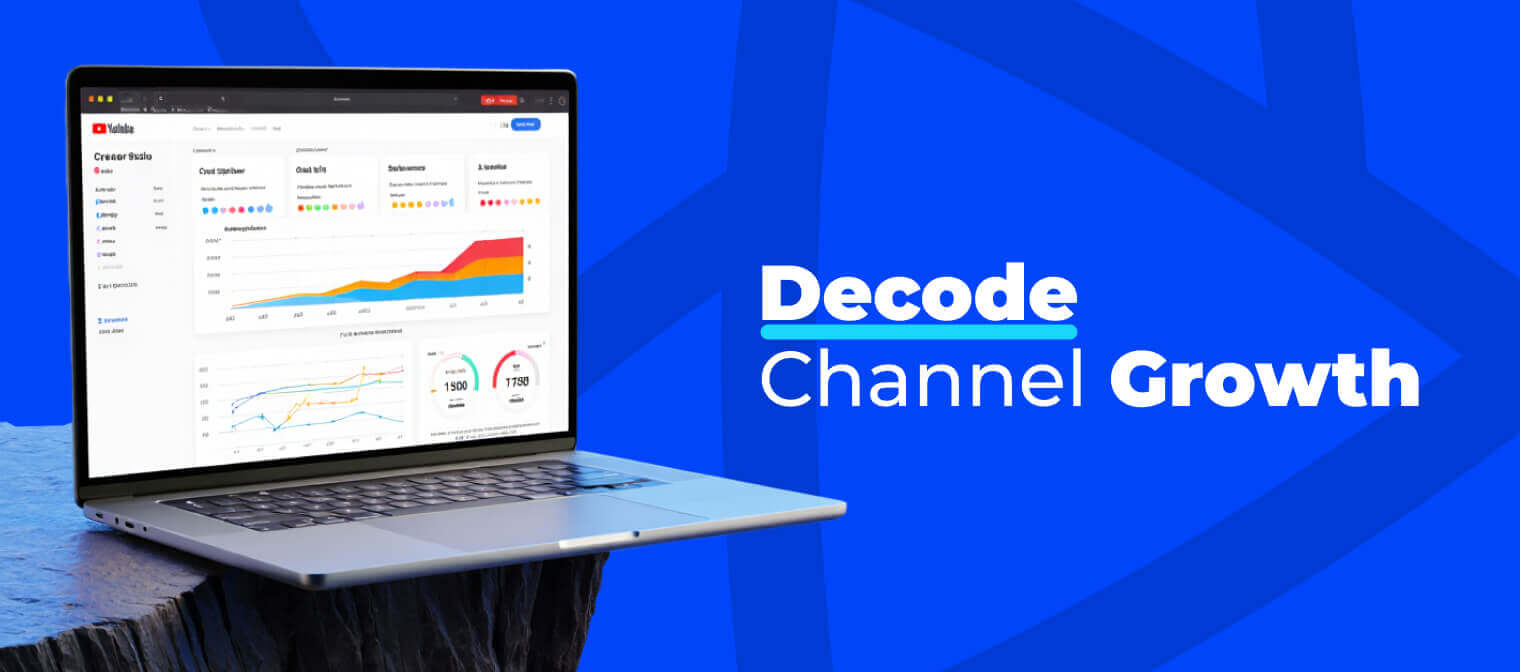If you want to benefit from competitor analysis, you have to move beyond intuition and into structured investigation.
Let’s talk about how real YouTube competitor analysis is done. The kind of strategic deep dive that tells you where the gaps are, what to borrow, what to avoid, and how to move past your rivals without copying a single thing.
Start with Friction, Not Admiration
When most creators look at competitors, they get caught up admiring what’s working. Great thumbnails. High views. Big subscriber counts. But that lens puts you on defense. You want to be on offense.
So, the first thing we do? We look for friction.
- Where do viewers stop watching?
- What’s missing from the comments?
- Which videos almost took off but didn’t?
- Where is the algorithm giving them reach, but not retention?
This approach flips the strategy awareness of competitive research on YouTube. You’re not here to admire their strengths. You’re here to spot their weak spots, because that’s where your openings are.
Run a Format Breakdown
Forget broad video types like “how-tos” or “reactions.” You need to analyze YouTube channels' formats at a structural level. We break it down like this:
- Hook length (How long till the video premise is clear?)
- Segment rhythm (Are there distinct chapters or transitions?)
- Style repetition (Do they use a repeatable structure across videos?)
- Narrative payoff (Is there a clear emotional or informational climax?)
Watch 10 videos, and score each one. Patterns will start to pop. You’ll notice what keeps their viewers watching, and more importantly, when they don’t.
Then compare to your own content structure. If their pacing is tighter, how do they do it? If they don’t use narrative payoff, maybe that is your edge.

Extract Their Keyword Spine
SEO involves understanding why a competitor structured their metadata in a particular way. We extract what we call the "keyword spine" of each top-performing video:
- What root phrase are they targeting?
- How does that align with their title, description, and tags?
- Which of their videos show up in search results for that phrase?
- Are those phrases seasonal, evergreen, or trend-chasing?
You can use tools like VidIQ and TubeBuddy to pull exact keyword rankings and compare them across competitors.
And the goal is to find the adjacent ones they ignored. That’s your low-competition, high-relevance zone.
Comments Are an Underrated
Yes, reading comments is time-consuming. You can use AI-based comment analysis tools that cluster sentiment, identify frequently asked questions, and even pull emotion-tagged phrases like "confusing," "love this part," or "please do more of X."
That’s your prompt to create better content.
YouTube creators often miss their own blind spots. The comment section tells you what their audience wants more of that they aren’t giving.
This is how you find video gaps. If people keep asking for a "deeper version" of a video your competitor just did, that’s your next upload.
Watch Their Thumbnails Like a Designer
Line up their last 20 thumbnails side-by-side. No titles, just images. What stands out?
Are they using big bold text? Close-up faces? One dominant color? Emojis? High contrast?
What changed in their design when views spiked?
Track CTR if the data is public via YouTube analytics tools. If one style consistently delivers high CTR, you just found a winning layout.
Analyze Upload Rhythm and Momentum
Are they publishing weekly, or do they binge-upload once a month? Are they using Shorts to spike traffic between long-form posts?
Go back six months. Did they grow fast? Slow down? Why?
This is competitive research that YouTube creators ignore until it’s too late. Your niche’s rhythm is very important. Find where it breaks, and time your uploads to stand out.
Ready to boost reach and grow your channel?
We’ll uncover what’s holding you back and how to fix it. Let’s talk.
Monitor Their Strategic Shifts
This is where most competitive research stops short. You need to track your competitors like a chess match, not a snapshot.
Did they suddenly switch to 16:9 Shorts? Are they pushing series-based content instead of one-offs? Did they cut upload frequency but increase runtime?
Track:
- Upload frequency changes.
- Title/thumbnail format shifts.
- Content format experiments.
- Distribution patterns (cross-promotion, reposts, collabs).
For example, one of the beauty creators noticed a competitor suddenly dropped tutorials in favor of "mistake" formats (“Top 5 things you’re doing wrong...”). Within a month, views doubled. Our partner adopted the structure but kept their own topic area.
Same trend, different angle for your right content strategy research.
Benchmark Engagement, Not Just Reach
If your competitor gets 100K views per video, great. But how many comments per 1,000 views? How many likes-to-views?
Use benchmark ratios:
- Comment-to-view ratio >1.5% = strong engagement
- Like-to-view ratio >6% = high resonance
- Sub gain per video = actual conversion power
This tells you not what gets attention, but what builds loyalty.
Sometimes, the smaller competitor is the one with real audience traction. If someone has 10K subs but pulls 1,000 comments on every video, they’re a loyalty machine. Watch them closely.
This gives you YouTube content benchmarking. If your competitor’s Q&A videos have 3x more comments per view than their tutorials, you just found their audience’s favorite format.
Look for What They Can’t Do
Here’s the part no tool or dashboard will show you: their constraints.
Look for limitations in:
- Language (do they only create in one?)
- Tone (are they stuck being ultra-formal or too casual?)
- Platform dependency (do they only succeed on YouTube, not TikTok or Insta?)
- Community (do they have real superfans, or just silent viewers?)
Your competitor’s constraint is your playground.
One of the tech creators spotted that their competitor had a very rigid production format, same background, same tone, same edit. They used it to experiment with jump cuts, something the other creator couldn't pivot to without alienating their base. It worked. They leapfrogged.
Run an Audience Overlap Scan
Use tools like Tubular, Channel Crawler, or even YouTube's "Related Channels" and audience retention insights in audience overlap analysis to identify where your audiences intersect.
If 60% of your viewers also watch Channel X, but Channel X never posts about Topic Y (which you cover), you’ve found your niche advantage.
Better yet, reverse-engineer their collaborations. Who do they partner with? Which creators send traffic their way? That tells you how their audience is being built and how to intercept it.
Distribution: Beyond the Channel
Where does your competitor exist outside YouTube?
- Are they reposting clips to TikTok or Insta?
- Do they run newsletters or Discords?
- Are they mentioned in Reddit threads, forums, or blogs?
This tells you how discoverable their content is. If you spot that a competitor gets 20% of their views from embeds on forums or syndication via MSN, you now have a roadmap for off-platform growth.

Never Copy. Reverse Engineer.
Copying your competitors will always put you behind. Instead, analyze their playbook, spot their blind spots, and then execute a version that fits your brand, audience, and strengths.
Everything you uncover should feed into your strategy.
Build your strategy around what works, not what feels good. That’s how channels grow fast.
We help creators like you find the right strategy for your channel and boost your growth.
Whether you need a full channel audit or a strategy shift, we’ve got the people and tools to make it happen. Just contact us today.
Let competitor video ideas follow trends. You lead with insight!



